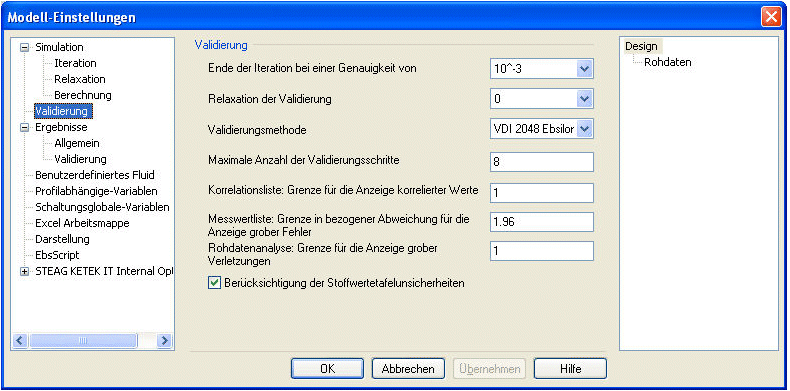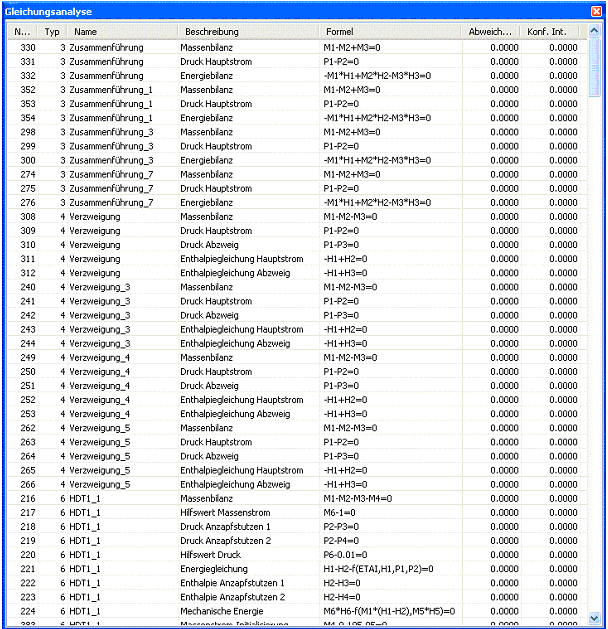

Since wrongly formulated auxiliary conditions can lead to false results, the auxiliary conditions are to be displayed such that the user can follow them up in cases of doubt. Correctly formulated auxiliary conditions are fulfilled by the true values without any contradictions. This requires that even the unknown systematic deviations of the material values and coefficients and the other approximation equations are taken into account as per VDI 2048 Section 4.7.3. If the design data has been determined correctly, then contradictions in the auxiliary conditions result only through the unknown systematic deviations of the material values and the coefficients and the other approximation equations, so that the correctness of the auxiliary conditions with corresponding display can be checked with the help of the design data.
A listing of all the auxiliary conditions can be viewed in EBSILON®Professional through the equations list (under the menu "View"). By default, however, only those equations are shown, in which broad violations occur in the scope of the raw data analysis. In order to display all auxiliary conditions, set the entry "Raw data analysis: Limit for display of broad violations" under "Validation" to 0:

The equations list can be sorted by double-clicking the column heading, here, for instance, on component type:

Specification values are included in the validation calculation with the help of pseudo measurement points. To do this, a specification value is to be entered in a measurement point, which is placed on a help line in the model. since normally no specifications are available in this case for the confidence interval, a sensible assumption is to be made here (which can then be verified after the calculation through the plausibility of the result values). For the pseudo measurement point, an index must be defined in the field FIND. In the observed component then this index must be entered in the field IPS, in order to establish the relation between the specification value and the pseudo measurement point.

Uncertainties in the material value tables are taken into account, if the flag "Consideration of the material value table uncertainties" is activated in the model options under "Validation".
Since many balancing equations contain the specific enthalpy instead, which cannot be measured directly, but instead is calculated from the pressure and temperature measurements, an uncertainty in the table has an effect on the confidence interval for the enthalpy. This leads to broadening in the confidence intervals of the results as well as also to correlations between pressures and temperatures. In case of fluids, which are composed of several materials (e.g. flue gas), the uncertainty must also be taken into account, with which the respective fraction of the material is known.
The formulas, how the table uncertainties are included in the calculation, are given in the chapter "Theoretical Basis - Calculation according to VDI 2048".